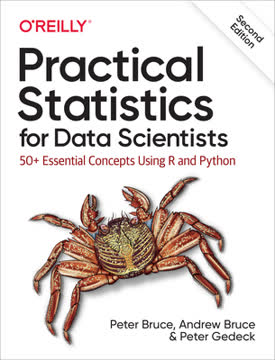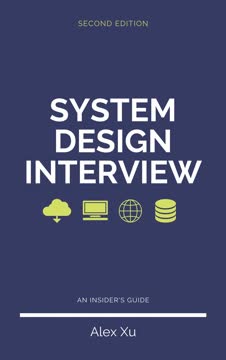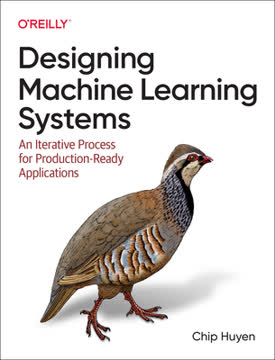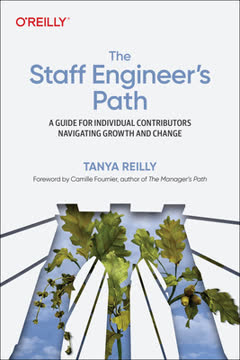Key Takeaways
1. Software architecture is the foundation of system quality and success
Software architecture is the structure or structures of the system, which comprise software elements, the externally visible properties of those elements, and the relationships among them.
Architectural importance. Architecture defines the high-level structure and key design decisions that shape a software system. It enables or inhibits critical quality attributes like performance, scalability, and maintainability. A well-designed architecture provides a solid foundation for development, facilitating easier changes and extensions as requirements evolve. It also improves communication among stakeholders by providing a shared understanding of the system's organization and behavior.
Early decisions. Many of the most impactful architectural decisions are made early in a project's lifecycle. These choices can be difficult and costly to change later, so careful consideration is crucial. Architects must balance immediate needs with long-term flexibility, anticipating future requirements and potential changes in technology or business direction. By investing time in thoughtful architectural design upfront, teams can avoid major refactoring efforts and technical debt down the road.
2. Effective architects balance technical expertise with business acumen
Software architects are technical leaders who are ultimately responsible for technical decisions, the architecture, and its documentation.
Broad knowledge. Successful software architects possess deep technical expertise across multiple domains, including programming languages, frameworks, databases, and infrastructure. They stay current with emerging technologies and industry trends. However, technical skills alone are not sufficient. Architects must also understand the business domain, organizational goals, and stakeholder needs to design solutions that deliver real value.
Communication skills. Architects serve as a bridge between technical and non-technical stakeholders. They must be able to:
- Translate business requirements into technical designs
- Explain complex technical concepts to non-technical audiences
- Facilitate discussions and decision-making among diverse groups
- Mentor and guide development teams
- Influence organizational technology strategy
3. Quality attributes drive architectural decisions and trade-offs
Quality attributes are measurable and testable properties of a system.
Key attributes. Common quality attributes include:
- Performance
- Scalability
- Availability
- Security
- Maintainability
- Usability
- Interoperability
Trade-offs. Architects must carefully balance competing quality attributes, as improving one often comes at the expense of another. For example, enhancing security measures may negatively impact performance or usability. Prioritizing attributes based on stakeholder needs and business goals is crucial for making informed trade-offs. Architects use techniques like quality attribute scenarios to specify and evaluate how well a proposed architecture satisfies key quality requirements.
4. Design principles and patterns provide proven solutions to common problems
Software architecture patterns are one of the most useful tools that can be leveraged for designing a software architecture.
Principles. Fundamental design principles guide architectural decisions:
- Separation of Concerns (SoC)
- Don't Repeat Yourself (DRY)
- SOLID principles (Single Responsibility, Open-Closed, Liskov Substitution, Interface Segregation, Dependency Inversion)
- Keep It Simple, Stupid (KISS)
Patterns. Architectural patterns offer reusable solutions to recurring design problems:
- Layered Architecture
- Model-View-Controller (MVC)
- Microservices
- Event-Driven Architecture
- Service-Oriented Architecture (SOA)
Architects should be well-versed in these principles and patterns, applying them judiciously to solve specific design challenges while avoiding over-engineering or forcing inappropriate solutions.
5. Modular and loosely coupled architectures enhance maintainability and flexibility
Orthogonal systems are designed so that their elements are loosely coupled and highly cohesive.
Modularity benefits. Modular architectures break systems into smaller, independent components with well-defined interfaces. This approach offers several advantages:
- Improved maintainability: Changes to one module have minimal impact on others
- Enhanced reusability: Well-defined modules can be repurposed across projects
- Parallel development: Teams can work on different modules simultaneously
- Easier testing: Modules can be tested in isolation
- Flexibility: Modules can be replaced or upgraded individually
Loose coupling. Minimizing dependencies between components is crucial for creating flexible systems. Techniques for achieving loose coupling include:
- Dependency Injection
- Event-driven communication
- Abstraction through interfaces
- Asynchronous messaging
6. Performance optimization requires systematic analysis and targeted improvements
Development teams should not be guessing where performance issues exist, as they will not always be where you expect.
Profiling and analysis. Performance optimization should follow a data-driven approach:
- Establish clear, measurable performance goals
- Profile the application to identify bottlenecks
- Analyze results to determine root causes
- Implement targeted improvements
- Measure impact and iterate
Common techniques. Effective performance optimization strategies include:
- Caching (server-side, client-side, distributed)
- Database query optimization and indexing
- Asynchronous processing and parallelization
- Resource minification and compression
- Content Delivery Networks (CDNs)
- Lazy loading of assets
7. Modern architectures leverage cloud, microservices, and serverless paradigms
Cloud-native applications are specifically designed for the cloud model.
Cloud-native benefits. Designing for cloud environments offers numerous advantages:
- Scalability and elasticity
- Reduced operational overhead
- Pay-per-use cost model
- Built-in high availability and disaster recovery
- Access to managed services and cutting-edge technologies
Microservices. Breaking monolithic applications into smaller, independently deployable services enables:
- Faster development and deployment cycles
- Improved fault isolation
- Technology diversity (polyglot development)
- Easier scaling of individual components
Serverless. Serverless architectures abstract away infrastructure management, allowing developers to focus solely on application logic. Benefits include:
- Automatic scaling
- Reduced operational complexity
- Lower costs for sporadic workloads
- Faster time-to-market
8. Cross-cutting concerns demand consistent, centralized implementation
Cross-cutting concerns are an aspect of the application that relies on and affects other concerns.
Common concerns. Examples of cross-cutting concerns include:
- Logging
- Error handling
- Security (authentication, authorization)
- Caching
- Transaction management
- Monitoring and instrumentation
Implementation strategies. Approaches for handling cross-cutting concerns include:
- Aspect-Oriented Programming (AOP)
- Middleware
- Decorators and wrappers
- Dependency Injection
- Centralized services or libraries
Consistent implementation of cross-cutting concerns improves maintainability, reduces code duplication, and ensures uniform behavior across the application.
9. Continuous learning and adaptability are essential for architectural excellence
Software architects need to communicate with a variety of stakeholders and sometimes serve as a bridge between management, technical staff, and non-technical staff.
Staying current. The technology landscape evolves rapidly, requiring architects to continuously expand their knowledge:
- Follow industry trends and emerging technologies
- Attend conferences and workshops
- Participate in open-source projects
- Read books, blogs, and technical publications
- Engage with professional networks and communities
Soft skills. Technical expertise alone is insufficient. Successful architects cultivate:
- Leadership and mentoring abilities
- Effective communication across diverse audiences
- Problem-solving and critical thinking skills
- Adaptability and openness to new ideas
- Empathy and stakeholder management
By combining deep technical knowledge with strong interpersonal skills and a commitment to lifelong learning, software architects can drive innovation and deliver lasting value to their organizations.
Last updated:
FAQ
1. What is "Software Architect’s Handbook" by Joseph Ingeno about?
- Comprehensive architecture guide: The book is a practical and detailed guide for software developers and architects, covering both technical and non-technical aspects of software architecture.
- Wide-ranging topics: It addresses foundational concepts, architecture patterns, quality attributes, modern application design, DevOps, security, documentation, legacy systems, and soft skills.
- Career development focus: The book aims to help readers transition into or excel in the software architect role, emphasizing continuous learning and adaptability.
- Bridges theory and practice: It provides actionable advice, real-world examples, and hands-on methods for designing, documenting, and evolving software architectures.
2. Why should I read "Software Architect’s Handbook" by Joseph Ingeno?
- Bridges theory and implementation: The book not only explains architectural concepts but also offers practical steps for applying them in real projects.
- Addresses modern challenges: It covers current industry topics such as microservices, cloud-native design, DevOps, security, and legacy modernization.
- Develops essential soft skills: The author emphasizes communication, leadership, and negotiation, which are crucial for architects working in collaborative and distributed environments.
- Suitable for all levels: Whether you’re aspiring to become an architect or are already experienced, the book provides value through its comprehensive coverage and actionable insights.
3. What are the key takeaways from "Software Architect’s Handbook" by Joseph Ingeno?
- Importance of quality attributes: The book stresses that attributes like maintainability, performance, security, and deployability are central to successful architecture.
- Emphasis on design principles: It highlights orthogonal design, loose coupling, high cohesion, and SOLID principles as foundations for robust systems.
- Modern architecture patterns: Readers learn about layered, microservices, serverless, and cloud-native architectures, along with their benefits and challenges.
- Continuous learning and soft skills: The book encourages ongoing technical growth and the development of communication and leadership abilities.
4. What are the main responsibilities and expectations of a software architect according to Joseph Ingeno?
- Technical leadership: Architects are responsible for system architecture, design, and documentation, guiding both technical and non-technical stakeholders.
- Broad and deep expertise: They must possess deep knowledge of current technologies and a broad understanding of related fields to make informed decisions.
- Active team involvement: The book warns against "ivory tower syndrome," urging architects to stay engaged with development teams and real-world needs.
- Facilitating communication: Architects act as bridges between management, customers, and developers, ensuring alignment and clarity.
5. How does "Software Architect’s Handbook" by Joseph Ingeno define and explain software architecture design approaches?
- Top-down approach: Starts with high-level abstractions and iteratively decomposes the system, suitable for well-understood domains and large teams.
- Bottom-up approach: Begins with detailed components and builds upward, aligning with agile practices but potentially leading to costly refactoring.
- Hybrid approach recommended: Combining both methods—starting with a high-level design and refining details incrementally—often yields the best results.
- Emphasis on adaptability: The book encourages flexibility in choosing and blending approaches based on project needs.
6. What are the most important software quality attributes discussed in "Software Architect’s Handbook" by Joseph Ingeno?
- Maintainability: Focuses on ease of change, supporting agile development and reducing long-term costs through modifiability and extensibility.
- Usability and availability: Ensures systems are user-friendly, accessible, and reliably available when needed.
- Portability, interoperability, testability: These attributes enable systems to run in various environments, exchange data with other systems, and be efficiently tested.
- Performance and security: The book also highlights the need for responsive, secure systems that meet stakeholder expectations.
7. What are the key software development and design principles emphasized in "Software Architect’s Handbook" by Joseph Ingeno?
- Orthogonal design: Advocates for loose coupling and high cohesion, making modules independent and focused, which simplifies maintenance and testing.
- Complexity minimization: Principles like KISS, DRY, YAGNI, and Separation of Concerns are stressed to reduce unnecessary complexity.
- SOLID principles: The book details Single Responsibility, Open/Closed, Liskov Substitution, Interface Segregation, and Dependency Inversion as essential for maintainable code.
- Dependency Injection: DI is promoted for decoupling components, improving testability, and supporting flexible architectures.
8. How does Joseph Ingeno’s book explain coupling, cohesion, and their impact on software architecture?
- Coupling defined: Measures the degree of dependency between modules, with loose coupling being desirable for independent development and easier changes.
- Types of coupling: Ranges from content (worst) to message/no coupling (best), with tighter coupling increasing complexity and reducing reusability.
- Cohesion explained: High cohesion means a module has a single, focused purpose, which correlates with better maintainability and reusability.
- Design impact: The book links high cohesion and loose coupling to robust, adaptable, and testable architectures.
9. What software architecture patterns and modern application architectures are covered in "Software Architect’s Handbook" by Joseph Ingeno?
- Layered architecture: Organizes systems into layers with clear responsibilities, promoting separation of concerns.
- Microservices: Describes small, autonomous services with independent deployment, supporting organizational agility but introducing complexity.
- Serverless and cloud-native: Explains architectures that leverage cloud platforms, containers, and event-driven models for scalability and rapid delivery.
- Other patterns: Covers MVC, MVP, MVVM, CQRS, SOA, and event-driven architectures, helping architects choose suitable solutions for different contexts.
10. How does "Software Architect’s Handbook" by Joseph Ingeno address cross-cutting concerns in software architecture?
- Definition and challenges: Cross-cutting concerns like logging, security, and caching affect multiple modules and require careful design to avoid code duplication.
- Implementation techniques: The book discusses using Dependency Injection, the decorator pattern, and Aspect-Oriented Programming to modularize these concerns.
- Microservices strategies: Introduces the microservice chassis framework and sidecar pattern for handling cross-cutting concerns in distributed, polyglot environments.
- Benefits: Proper management improves maintainability, reduces duplication, and enhances system consistency.
11. What methods for software architecture documentation and review does Joseph Ingeno recommend in "Software Architect’s Handbook"?
- Multiple architecture views: Advocates for using different views (e.g., logical, physical, process) to address various stakeholder concerns.
- Design rationale documentation: Stresses recording the reasons behind decisions, alternatives considered, and rejected options for future reference and maintenance.
- Review techniques: Details methods like SAAM, ATAM, ADR, and ARID for structured evaluation and validation of architecture designs.
- UML and notations: Covers the use of UML diagrams (class, component, sequence, etc.) to communicate structure and behavior effectively.
12. How does "Software Architect’s Handbook" by Joseph Ingeno guide architects in handling legacy systems and evolutionary architecture?
- Legacy system challenges: Discusses issues like technical debt, outdated technologies, and lack of documentation, and why legacy systems persist.
- Refactoring and modernization: Recommends making code testable, removing redundant code, and incrementally transforming monoliths into microservices.
- Evolutionary architecture: Defines it as supporting guided, incremental change, using fitness functions to ensure quality during evolution.
- Design for adaptability: Encourages loosely coupled components, evolvable APIs, use of standards, and delaying decisions to maintain flexibility over time.
Review Summary
Software Architect's Handbook receives mostly positive reviews, with readers praising its comprehensive coverage of software architecture topics. Many find it insightful for both experienced developers and those aspiring to become architects. The book is commended for its broad scope, including modern concepts like microservices and cloud-native applications. Some readers appreciate its technology-agnostic approach and practical advice. However, a few critics argue that the book lacks clear structure and depth in certain areas, describing it as a collection of basic definitions rather than in-depth explanations.
Similar Books








Download PDF
Download EPUB
.epub digital book format is ideal for reading ebooks on phones, tablets, and e-readers.




